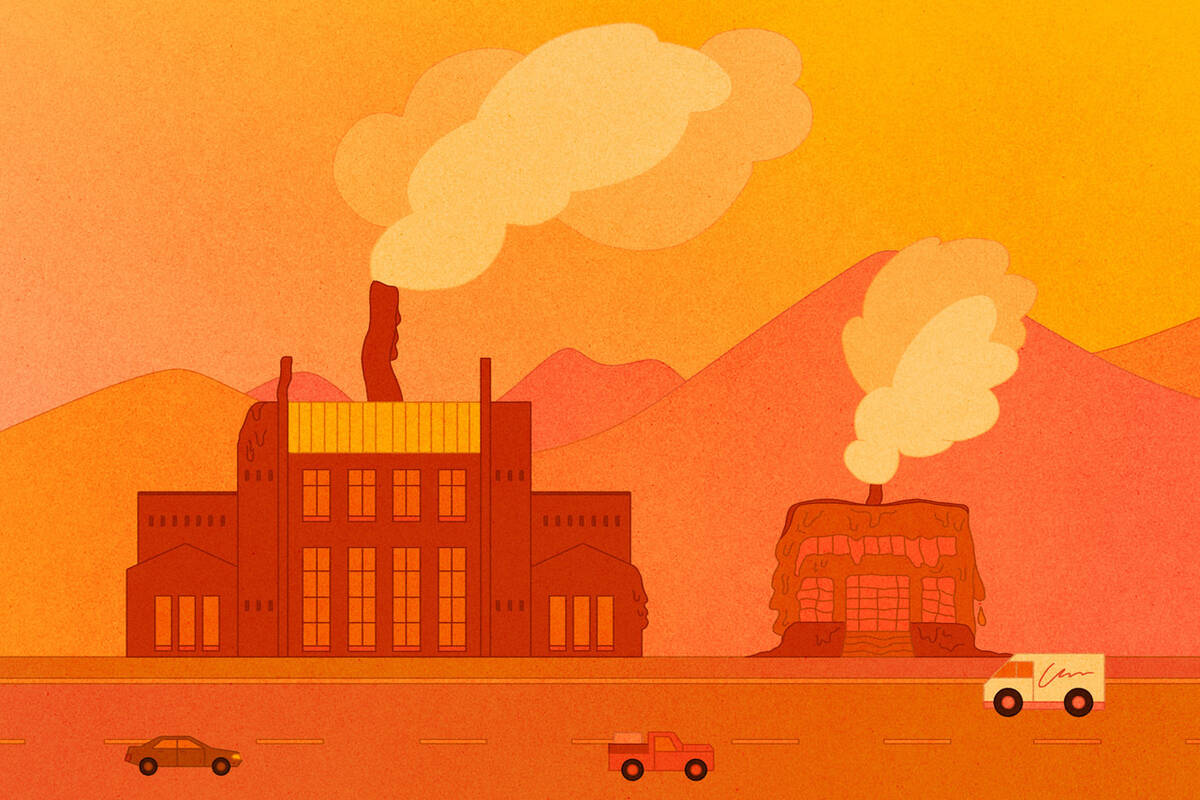Finance & Accounting Policy Nov 1, 2023
In a Warming U.S., Smaller Manufacturers Are Feeling the Heat
Smaller firms struggle in the face of temperature shocks, while larger ones are less affected—a trend that is driving industry consolidation.

Lisa Röper
Most Americans now acknowledge that global warming is happening. But they (like citizens of many other developed countries) are still likely to foresee its worst effects taking place elsewhere—particularly in developing countries.
Jacopo Ponticelli, an associate professor of finance at Kellogg, says this tendency is reflected in the research literature, too. Much of the scholarship examining the economic threat posed by climate change has focused on developing countries, especially those that rely heavily on agricultural production.
Ponticelli himself has published research examining how climate change is shaping the agricultural industry in Brazil. But as he presented and discussed that paper with colleagues, he found his attention shifting to the U.S.—and wondering how much the American economy has been affected by rising temperatures. After all, average temperatures in the U.S. have jumped substantially over the past century and especially since the 1980s.
In a new paper, Ponticelli and coauthors Qiping Xu and Stefan Zeume, both of the University of Illinois Urbana–Champaign, drew on U.S. Census data to study manufacturing plants over four decades of rising temperatures. They found that climate change is, in fact, already affecting the U.S. manufacturing industry—and that small firms in particular are bearing the costs of a warming climate. Over time, this disproportionate burden has driven concentration in the manufacturing industry, as workers from struggling smaller firms have been absorbed by larger ones.
“It’s important to know that even in developed economies like the U.S., the effects of climate change are present and significant,” Ponticelli says. “We need to understand that our economy is not immune to these effects.”
The cumulative impact of shocks
To investigate the impact of rising temperatures on the U.S. manufacturing industry between 1980 and 2019, the researchers combined three datasets from the U.S. Census Bureau. From this, they were able to glean granular data about domestic manufacturing plants, including the number of employees who worked there, the number of hours they worked, where the plants were located, and how much the plants spent on electricity and fuel. Together, these revealed patterns in how (if at all) manufacturing activity responded to extreme weather.
To understand how manufacturing activity changes in response to extreme weather, the researchers next turned to data from the PRISM Climate Group, which collects daily minimum and maximum temperatures for 2.5-mile-by-2.5-mile grids across the U.S., and from the Spatial Hazard Events and Losses Database, which keeps records of extreme weather events around the country, including heat waves.
The research team looked at how firms responded to temperature changes, both contemporaneously (that is, within the same year) and over the full four decades of their sample period.
Studying both short- and long-term changes was important “because it might take a while to respond to these shocks, and firms may not respond in the same year in which the shock happens,” Ponticelli says. For example, investing in better climate-control systems, better insulation, or better structure protection often takes years, not months. “We needed a long-enough horizon to see the outcome of these decisions.”
How climate change drives concentration
In the short term, the researchers found that especially high temperatures increased costs (mainly in the areas of electricity and fuel, for temperature management) and hampered worker productivity—but only among plants with fewer than 50 employees. Larger establishments appeared unaffected by temperature shocks in the immediate aftermath, perhaps because their machinery, equipment, and buildings were of higher quality and less sensitive to hotter conditions.
Over the four-decade period, the picture for small businesses in particular was even bleaker. Regions that warmed more quickly saw larger declines in the number of small plants but no significant change in the number of large plants. Analysis of employment patterns indicated that at least some of the workers who left shuttered small plants went to larger ones.
“It’s important to know that even in developed economies like the U.S., the effects of climate change are present and significant. We need to understand that our economy is not immune to these effects.”
—
Jacopo Ponticelli
The upshot, over the long term, is higher local concentration in the manufacturing industry. The researchers note that in the counties where temperatures increased by at least one standard deviation between the 1980s and the 2010s, employment was 1.4 percentage points more concentrated within the top five largest plants.
Among economists, it’s well established that concentration is on the rise in the U.S. manufacturing sector. The common explanations for the trend tend to be the development of technologies that reward economies of scale and policies that have pushed globalization and decreased domestic competition. However, these new findings suggest the common wisdom may be glossing over an important driver of manufacturing industry consolidation: our warming climate.
“It seems natural, perhaps, that different firms have different abilities to adapt to a changing climate, and those that are better equipped to adapt are the ones on which economic activity is going to concentrate over time,” Ponticelli says. “I think the main point then becomes, why are these companies better at adapting, and what can managers and business leaders learn from these results?”
The researchers point to three potential explanations for larger firms’ adaptive superiority. First, larger manufacturing plants are more likely to be part of a national or international network, which allows them to hedge against weather shocks by moving production when necessary. A second possibility is that larger firms have more consistent access to external financing, reducing their need to lay off workers or close plants when heat waves or natural disasters strike. The final potential explanation—and the most instructive one, perhaps, for smaller firms—is the role of managerial foresight.
“It’s possible larger firms have more forward-looking managers,” Ponticelli says. Such managers could have been investing proactively to insulate buildings, purchasing equipment less prone to overheating, negotiating better deals with electric companies, or installing solar power systems. “All these things are part of good management,” he adds.
Lessons for all firms
Ponticelli and his colleagues plan to continue their research by investigating which of these mechanisms plays the greatest role in enhancing larger firms’ adaptability; one idea is to survey managers to better understand their responses to heat shocks and other shifting weather patterns. Hopefully, this will help clarify what, if anything, smaller firms can do to survive in the face of long-term climate change.
“I really, really believe that understanding why these large firms are doing better is of vital importance,” Ponticelli says. “Climate change is the big challenge of our time; that amplifies the importance of having management that knows how to adjust.”
Katie Gilbert is a freelance writer in Philadelphia.
Ponticelli, Jacopo, Qiping Xu, and Stefan Zeume. 2023. “Temperature and Local Industry Concentration.” NBER working paper.


